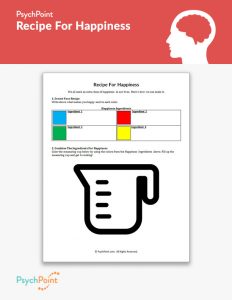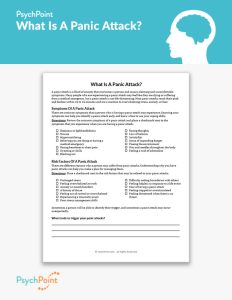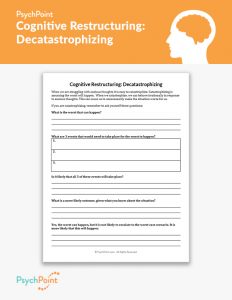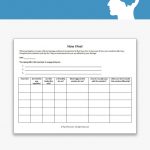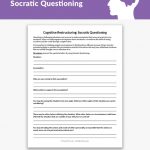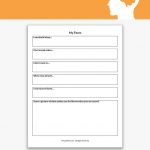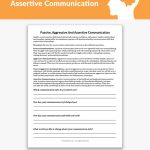Fight-Or-Flight Response Worksheet
Worksheet updated on December 13th, 2021
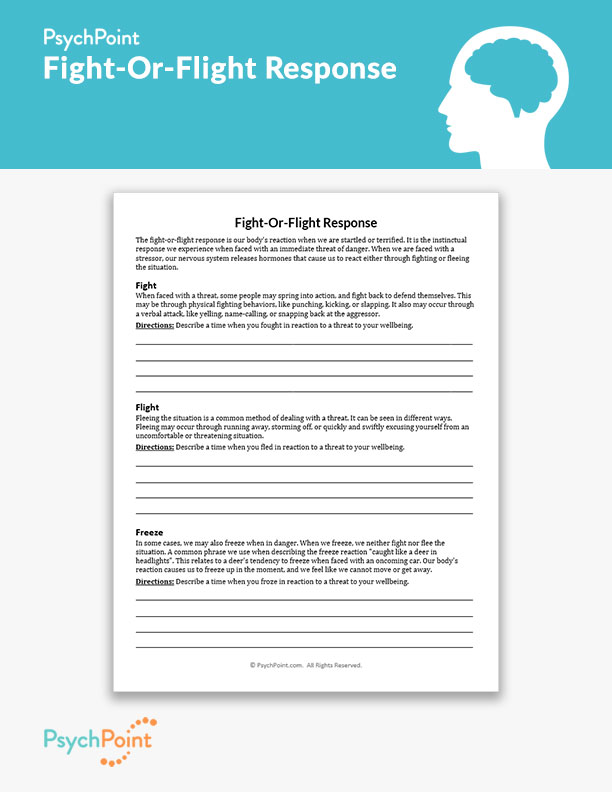
Everyone reacts differently when faced with a high-stress situation. It can be confusing for people to know why they reacted to such situations the way they did when reflecting, but there is a theory that suggests that when a person is faced with danger, they will react in one of three ways. They will either fight, flee the situation, or freeze. This concept often comes up in therapy and can help a client understand why they reacted the way they did when faced with a dangerous or threatening situation.
The flight-or-flight response is often discussed when helping clients cope with trauma. Traumatic memories are often based on this concept, as a person struggles to make sense of why they reacted the way they did. Understanding what the fight-or-flight response is and how it affects a person helps bring clarity to affected clients who are working through trauma.
About This Worksheet
This is the Fight-Or-Flight worksheet. On this worksheet, you will find a brief description of the flight-or-flight response. The worksheet provides an overview and reflection question for each of the 3 common responses: Fight, Flight, and Freeze.
This worksheet is a great resource to provide psychoeducation about why people respond the way they do when faced with a threat. It is especially helpful for adolescents and adults who are learning how to cope with trauma. This worksheet can be utilized in individual sessions. It can also be used in group sessions if the mental health professional deems it appropriate.
Instructions
This worksheet is a resource to learn about the fight-or-flight response. Use this worksheet to explain what each of the three possible reactions to threat or danger means.
Once you have reviewed the content of the worksheet with the client and answered their questions, allow the client time and space to answer the reflection questions. They may be able to provide a reflection for one, some, or all of the three types of responses. When the client has completed their reflections, review the results with them and help them apply the concept of the fight-or-flight response to their own traumatic memories and experiences.

